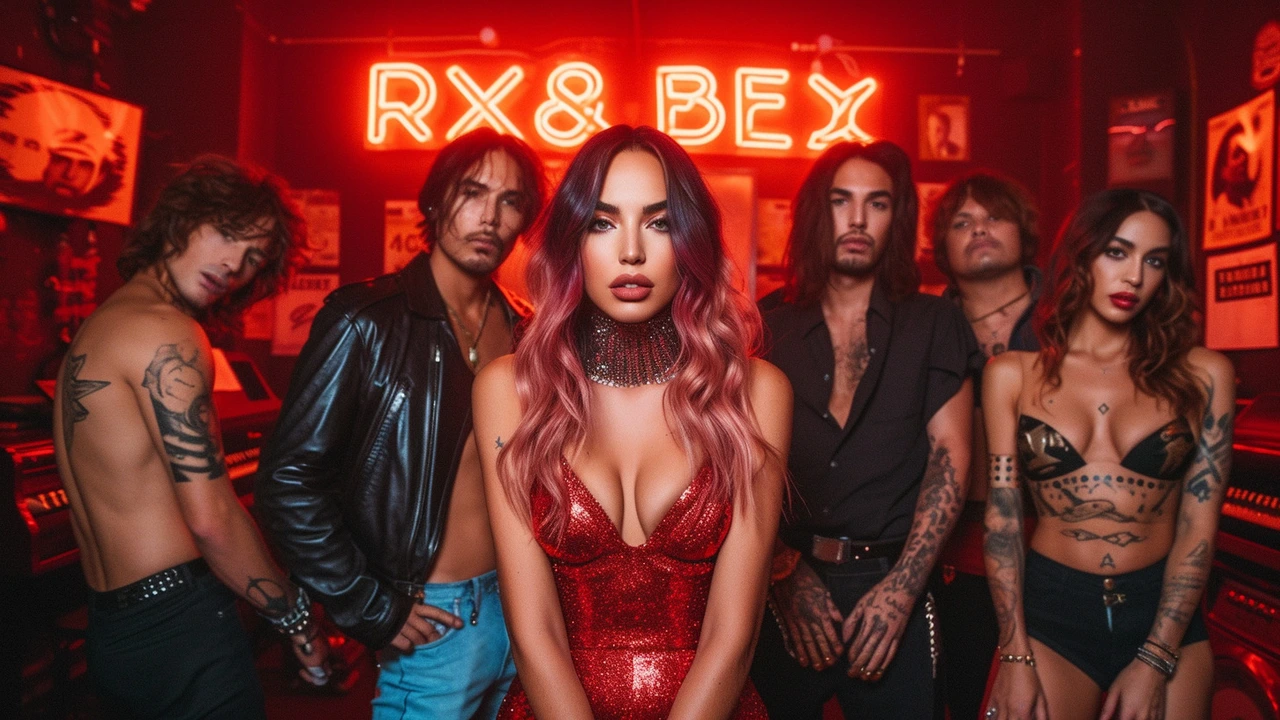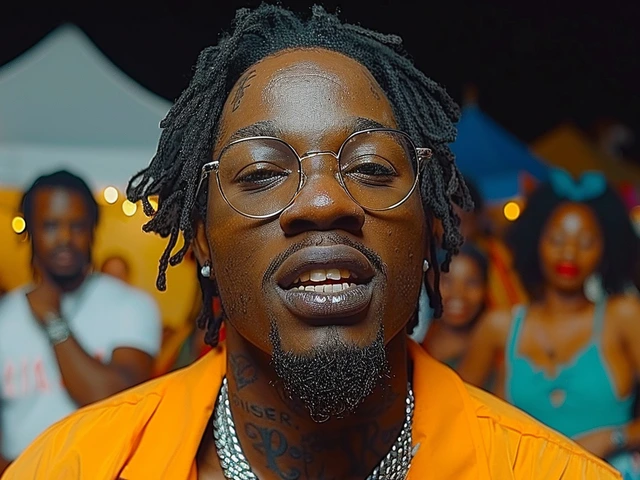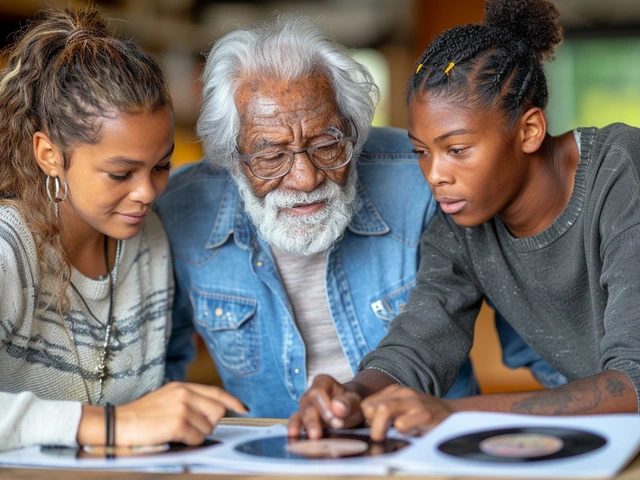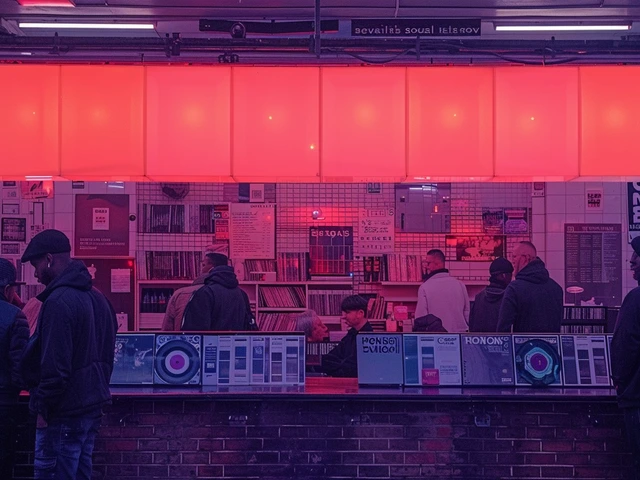The Historical Connection Between R&B and Fashion
Rhythm and Blues, often abbreviated as R&B, has roots that stretch back to the post-World War II era, intertwining deeply with African American culture and societal shifts. This genre, characterized by its soulful melodies and emotional depth, quickly became more than just a musical movement; it transformed into a powerful expression of identity, resistance, and celebration. As the genre evolved, so did its influence on fashion. In the early days, R&B artists were often seen donning sharp, tailored suits, crisp dresses, and polished shoes - a style that spoke of dignity, elegance, and defiance in the face of societal adversities.
In the 1950s and 1960s, the fashion choices of R&B musicians and their fans became symbols of sophistication and pride. Iconic figures like Ray Charles, Aretha Franklin, and later James Brown and Stevie Wonder, not only defined the sound of their generation but also influenced the way people dressed. From their stylish onstage outfits to their flamboyant personal wardrobes, these artists set trends that echoed throughout the fashion world.
This era marked the beginning of a symbiotic relationship between R&B music and fashion, with each new musical trend bringing a corresponding shift in style. As the genre spread, it carried with it a vibe that was both refined and rebellious, influencing not only African American culture but also the broader society. The fashion industry, keen on capturing the zeitgeist of each era, began to draw inspiration from the R&B scene, incorporating its elements into mainstream styles and collections.
By examining the wardrobe of any R&B legend, one can trace the evolution of the genre itself - from the smooth, soulful sounds of the '50s and '60s to the funky beats of the '70s and '80s. Each period's fashion encapsulated the essence of its music, serving as a visual representation of the rhythm and blues spirit.
R&B Icons as Fashion Trendsetters
The intersection of R&B music and fashion is perhaps most vividly illustrated through the individuals who have come to represent the genre. These artists, through their personal style and public appearances, have left an indelible mark on what it means to look and be 'in vogue.' Think of Prince, with his flamboyant and androgynous aesthetic, pushing the boundaries of gender norms and inspiring a wave of self-expression among fans and designers alike. Or consider Rihanna, whose career, though spanning various genres, has roots in R&B and who has become a global fashion icon, known for her daring choices and trendsetting looks.
These artists, and many others like them, utilized fashion not just as a means of personal expression but as a tool for storytelling and brand building. Through their clothing, they communicated their identities, their musical influences, and their stances on social issues, which resonated deeply with their audiences. As a result, the fashion trends set by these R&B icons often transcended the music industry, influencing the collections of high-end designers and the everyday outfits of their fans.
This phenomenon of musicians as fashion influencers is not new, but the relationship between R&B artists and the fashion world is particularly dynamic. Their ability to innovate and remain culturally relevant has made them perennial favorites among fashion designers looking for inspiration. From the runway to the streets, the influence of these trendsetters can be seen in an array of styles, all carrying the indomitable spirit of R&B.
As we explore the specific impacts and contributions of R&B icons to fashion, it becomes clear that their legacy is not just in the music they've created but also in the way they've inspired people to see and express themselves through clothing. Their fashion choices are as much a part of their artistry as their music, crafting a complete narrative that continues to inspire new generations.
The Role of R&B in Shaping Streetwear
One of the most direct ways in which R&B has influenced fashion is through the evolution of streetwear. This casual, urban-inspired style of clothing has roots in the music, art, and cultures of the streets, and R&B has played a crucial role in its development. Streetwear draws on the genre's emphasis on authenticity, self-expression, and community, incorporating these values into designs that resonate with a wide demographic.
The adoption of streetwear by R&B artists in the 1990s and 2000s marked a significant shift in the genre's fashion narrative. As R&B music began to incorporate elements of hip-hop, its artists started embracing and promoting streetwear brands, blending the smooth, soulful aesthetics of R&B with the edgy, bold lines of hip-hop fashion. This fusion created a new look that was relatable, accessible, and deeply rooted in the culture of its listeners.
Today, streetwear is a global phenomenon, with high-fashion designers and mainstream consumers alike embracing its relaxed yet statement-making pieces. Sneakers, hoodies, oversized garments, and bold accessories - once relegated to the fringes of fashion - are now central to the industry's offerings. R&B artists continue to be at the forefront of this trend, collaborating with brands, launching their own fashion lines, and setting the pace for what's cool and coveted in streetwear.
The influence of R&B on streetwear exemplifies how music can shape not only the sounds of its time but also the visual landscape. It showcases the power of R&B to imbue fashion with a sense of identity, community, and resistance, making streetwear more than just clothing, but a statement of belonging.
As we delve deeper into the elements that define R&B-inspired streetwear, we see a reflection of the genre's core values - a celebration of individuality, a nod to heritage, and a commitment to staying authentic in a constantly changing world.
Ongoing Dialogue Between Music and Fashion
The relationship between R&B music and fashion is not a static one; it is an ongoing dialogue that continues to evolve with each new generation. As the genre adapts to changing times, incorporating new sounds and themes, so does the fashion it inspires. This dynamic interaction ensures that both music and fashion remain at the cutting edge of cultural trends, reflecting and affecting societal changes.
Technology, social media, and globalization have amplified this dialogue, allowing for a cross-pollination of ideas and styles that blur the lines between regions and genres. Today's R&B artists, drawing on a wider range of influences than ever before, are redefining what it means to be a fashion icon in the digital age. With every Instagram post or music video release, they introduce new trends, reimagine old ones, and invite their audiences to engage in a global conversation about style and identity.
This continuous interchange between R&B and fashion highlights the enduring power of music to inspire and shape our visual world. Whether it's through the glamorous gowns worn on the red carpet, the edgy streetwear seen in music videos, or the vintage finds that signal a nod to the genre's roots, the influence of R&B on fashion is omnipresent.
In conclusion, the story of R&B and fashion is one of mutual inspiration and transformation. It's a testament to the genre's ability to not only set trends but also to challenge norms and express deeper truths. As we look forward to the fashion trends that will define future decades, one thing is certain: R&B will be there, providing the soundtrack and the style.




Write a comment